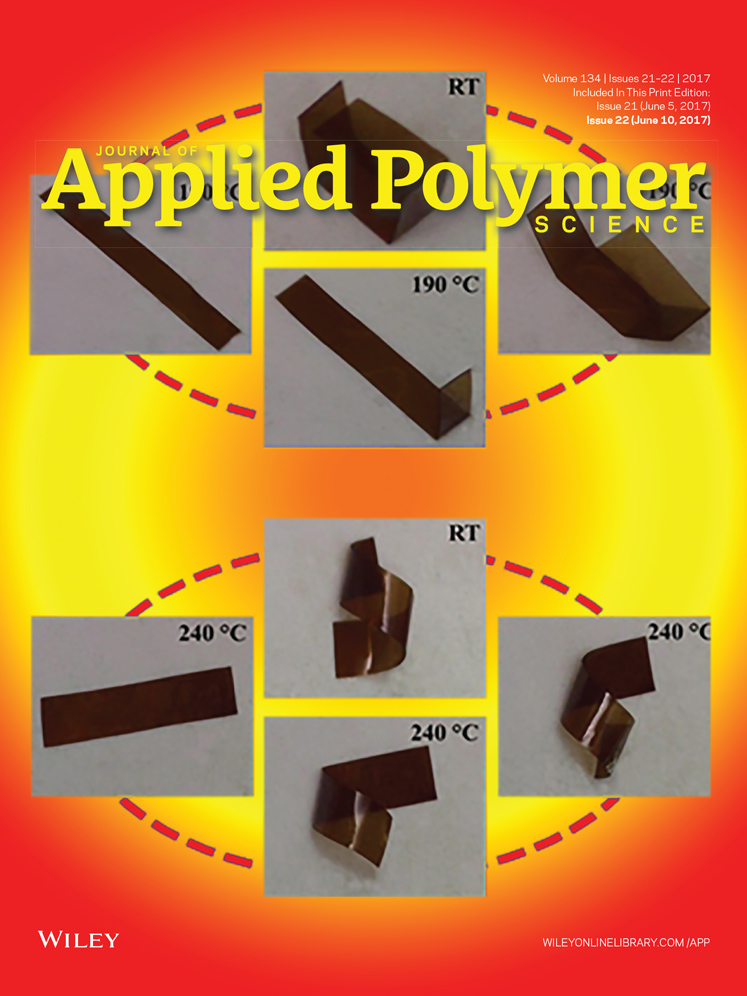Extraction resistance and mechanism of a macromolecular hindered phenol antioxidant in natural rubber
ABSTRACT
Due to low thermal stability, poor migration, and extraction resistances, the antioxidant with low molecular weight is easy to physically lose during processing and long-term service, and its applications are severely restricted. To increase the molecular weight of antioxidant is one of the promising methods to overcome such drawbacks. In this study, the extraction resistance of a macromolecular antioxidant, namely polyhydroxylated polybutadiene containing thioether binding 2,2′-thiobis(4-methyl-6-tert-butylphenol) (PHPBT-b-TPH), was investigated by extraction resistance test and equilibrium swelling experiment. The results exhibited that the PHPBT-b-TPH offered much better extraction resistance in natural rubber (NR) than the low molecular weight antioxidant TPH. In addition, the extraction resistance of hydroxyl-terminated polybutadiene (HTPB), polyethylene glycol (PEG), and polypropylene glycol (PPG) in NR were also compared to study the extraction mechanism of the PHPBT-b-TPH. It was found that the higher molecular weight of PHPBT-b-TPH and the co-vulcanization between PHPBT-b-TPH and NR were the main reasons for the excellent extraction resistance. © 2017 Wiley Periodicals, Inc. J. Appl. Polym. Sci. 2017, 134, 44905.




